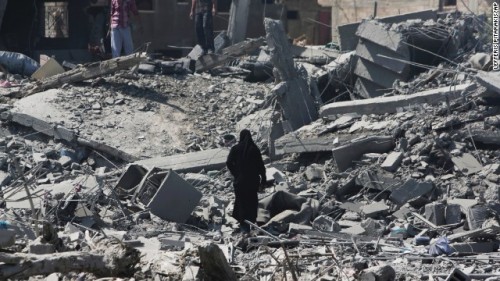Writing for the London Review of Books, Nathan Thrall offers a lucid analysis of how both Israel and Hamas rejoined the path to war, parallelling EA’s assessment from last month:
See Israel & Gaza Video Analysis: “Groundhog’s Day War” — How Netanyahu & Hamas Both Benefit
1. After their November 2012 bombardment of Gaza, “Israeli officials…convinced themselves that the quiet on Gaza’s border was primarily the result of Israeli deterrence and Palestinian self-interest”.
So they “saw little incentive in upholding (their) end of the deal” which was supposed not only to stop the attacks from both sides but also to lead to a political resolution. The Israeli military continued regular incursions into Gaza and shot at farmers and scrap collectors. West Jerusalem blocked the commitment in the agreement for “opening the crossings and facilitating the movements of people and transfer of goods, and refraining from restricting residents’ free movements”.
Talks to implement the deal never took place.
2. The number of Gazan rocket attacks on Israel in 2013 was the lowest in 10 years. However, Hamas found itself not only pressed by Israel but also by the Egyptian regime after the military coup in July — Cairo imposed travel bans on Hamas officials, reduced movement of Gazans to a small fraction of the pre-July 2013 number, and closed nearly all of the tunnels on which Gazans relied to keep the economy going and to pay civil servants.
2. Rather than resume the conflict with Israel by firing rockets, Hamas chose to hand over responsibility for governing Gaza to appointees of the Palestinian Authority in the West Bank, led by its rival Fatah. The two sides declared a “unity” agreement, and even though the Palestinian Authority dominated the arrangement — in administrative positions, policies, and security measures — Hamas complied.
4. The Netanyahu Government, having rejected the Palestinian unity arrangement, oversaw the “largest West Bank campaign against Hamas since the Second Intifada” in June after three Israeli teenagers were abducted and killed — even though those responsible appear to have been outside the organization.
As protests arose against the Israeli crackdown, “militants in Gaza from non-Hamas factions began firing rockets and mortars in solidarity”. The Gazan leadership had to choose whether to renounce the rocket fire, risking a public backlash, or to embrace it:
For Hamas, the choice wasn’t so much between peace and war as between slow strangulation and a war that had a chance, however slim, of loosening the squeeze. It sees itself in a battle for its survival.
On July 7, Hamas accepted responsibility for the rockets. On July 8, Israel announced “Operation Protective Edge”.

